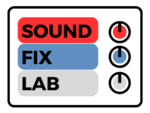Creating a professional-sounding mix is a crucial aspect of music production. While novice mixers may face various challenges, recognizing and rectifying common mistakes can significantly improve the quality of their mixes. In this tutorial, we will explore the top ten signs of an amateur mix and provide practical solutions to fix them. By addressing these issues, aspiring producers can elevate their mixes to a more polished and sonically pleasing level.
1. Imbalanced Frequency Spectrum:
One of the most apparent signs of an amateur mix is an imbalanced frequency spectrum. This occurs when certain frequencies are excessively emphasized or neglected, resulting in a muddy or thin mix. To fix this, use frequency spectrum analyzers and carefully adjust EQ settings to ensure a more balanced representation of frequencies.
2. Poor Panning:
Improper panning can lead to a crowded and disorienting mix. Beginners often neglect the stereo field, resulting in a lack of clarity and separation between instruments. To fix this, experiment with panning individual elements to create a sense of space and width, allowing the mix to breathe.
3. Weak or Inconsistent Dynamics:
A mix lacking dynamic range can sound dull and lifeless. Inadequate use of compression and automation leads to weak transients and a lack of energy. To fix this, apply compression judiciously to control dynamics and use automation to create dynamic interest and movement within the mix.
4. Inadequate Spatialization:
A common mistake is neglecting the depth and spatialization of the mix. A flat mix lacking depth can sound unengaging and lack dimension. To fix this, use reverb, delay, and other spatial effects to create a sense of depth and space, enhancing the immersion and realism of the mix.
5. Insufficient Stereo Imaging:
An amateur mix often lacks a wide stereo image, resulting in a narrow and congested soundstage. To fix this, utilize stereo imaging techniques such as stereo widening plugins and mid-side processing to achieve a wider and more immersive stereo image.
6. Unbalanced Levels:
A mix with inconsistent volume levels can be fatiguing to the listener. Novice mixers often struggle with balancing the relative loudness of different elements. To fix this, utilize gain staging techniques, volume automation, and reference tracks to ensure a well-balanced mix with the appropriate perceived loudness.
7. Excessive or Inadequate Effects:
Overusing or misusing effects is a common pitfall for beginners. Heavy-handed application of effects can drown out the mix, while insufficient use may result in a bland and uninspiring sound. To fix this, use effects sparingly and purposefully, ensuring they enhance the mix rather than overpower it.
8. Lack of Clarity and Separation:
An amateur mix often lacks clarity and separation between individual elements, making it challenging for listeners to distinguish different instruments. To fix this, employ EQ to carve out space for each element, use stereo imaging techniques to widen the soundstage, and apply judicious use of panning to create separation.
9. Inconsistent Stereo Balance:
A mix with inconsistent stereo balance can create listener fatigue and confusion. Novice mixers often struggle to achieve a consistent balance between the left and right channels. To fix this, use metering tools and A/B comparisons to ensure a stable stereo balance throughout the mix.
10. Ignoring the Importance of Monitoring:
Many amateur mixers neglect the significance of accurate monitoring. Mixing on subpar speakers or headphones can lead to inaccurate judgments about the mix’s quality. To fix this, invest in reliable studio monitors or headphones and acclimate your ears to their sonic characteristics for more accurate mixing decisions.
Developing a discerning ear and refining mixing techniques are essential for aspiring music producers. By recognizing the top ten signs of an amateur mix and implementing the suggested solutions, producers can significantly improve the quality of their mixes. Remember, practice, experimentation, and continuous learning are key to achieving professional-sounding mixes that captivate listeners and bring music to life.




